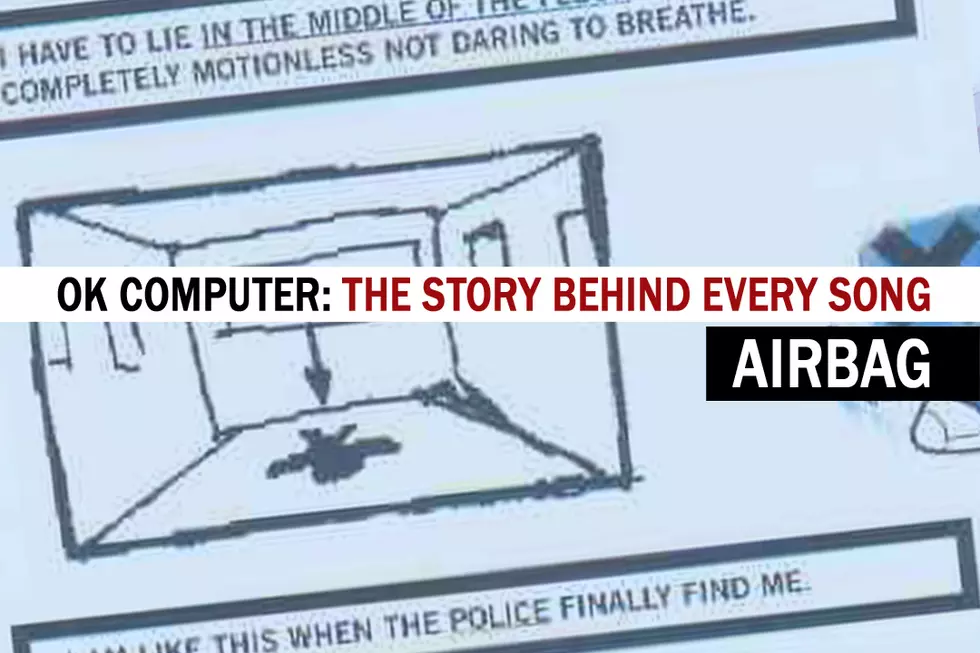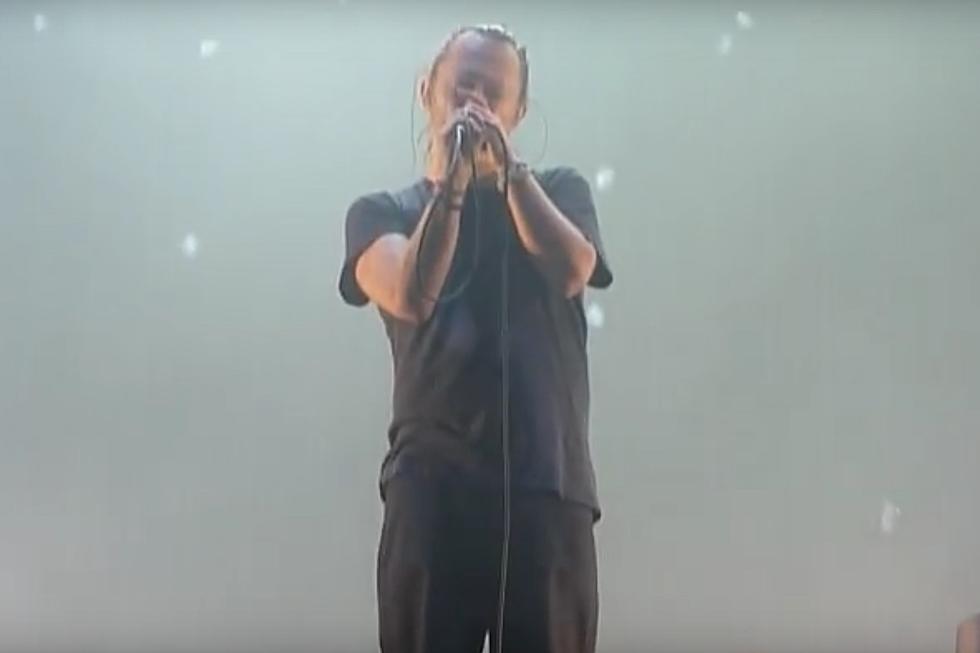
How Radiohead Were Born Again with ‘Airbag’
A decade before Radiohead released OK Computer, frontman Thom Yorke was involved in a car accident. His girlfriend at the time was injured, but Yorke walked away unscathed. Well, unscathed physically. His subsequent distrust of automobiles (and technology in general) made its way into much of their third album, especially "Airbag."
The leadoff track, and final single, "Airbag" was inspired by an article in a British Automobile Association magazine titled “An Airbag Saved My Life” as well as the themes of reincarnations expressed in The Tibetan Book of the Dead. Supposedly, the song’s working title was “Last Night an Airbag Saved My Life,” a wink at Indeep’s 1982 hit “Last Night a D.J. Saved My Life.”
“Has an airbag saved my life? Nah… but I tell you something, every time you have a near accident, instead of just sighing and carrying on, you should pull over, get out of the car and run down the street screaming, ‘I’m BACK! I’m ALIVE! My life has started again today!’” Yorke told Select in 1997. “In fact, you should do that every time you get out of a car. We’re just riding on those things – we’re not really in control of them.”
Yorke sings, “I’m amazed that I survived” on the song, also wryly suggesting in the chorus that he’s become some sort of messiah in doing so. “I’m back to save the universe.” A repeated refrain in the verses, delivered in the singer’s yelping coo, is “I am born again.” And so were Radiohead, who were seeking a bit of creative reinvention after hitting it big in the U.K. with 1995’s The Bends.
Instead of writing introspective lyrics, Yorke focused his attention on the outside world. Rather than continue to fill songs with arena-rattling riffs, Jonny Greenwood, Ed O’Brien, Colin Greenwood and Phil Selway began experimenting with elements of electronic and dance music. Instead of toiling under a producer, Radiohead planned to helm the sessions themselves, collaborating with engineer Nigel Godrich (who became a co-producer on OK Computer and every Radiohead record that followed).
Although “Airbag” began life as an acoustic number, it gently shifted into more experimental territory as the band recorded material at St. Catherine’s Court, a mansion located in rural Bath, England. Instead of recording a traditional drum beat for the tune, Selway pounded away for 15 minutes while the guys recorded his work on a digital sampler. The drummer then teamed with Yorke to slice up the recording on a computer to create the three-second sample that would be featured on the finished tune.
“It was actually DJ Shadow who inspired it – the way he cuts up beats is amazing,” Selway told Melody Maker. “The end result doesn’t really sound like what we were aiming for, but that’s probably a good thing.”
Meanwhile, Colin Greenwood played a start-and-stop bassline evocative of ’70s dub music and brother Jonny contributed some ghostly Mellotron after leading the charge with a big, distorted guitar that wouldn’t have sounded out of place on The Bends. As such, “Airbag” became a sort of bridge between the previous Radiohead album and the new one.
Plus, the song's car-crash subject matter provided a link to the last song on OK Computer, “The Tourist,” which may involve another auto accident (“They ask me where the hell I’m going at 1,000 feet per second”). This connection between the first and last songs suggests a cycle of violence and ignorance, involving humanity and machines – a delicate balance between life and death.
“‘Airbag’ is more about the idea that whenever you go out on the road you could be killed,” Yoke told Q in 1997. “Every age has its crazy idiosyncrasies, crazy double-think. To me, for our era it’s cars. I always get told off for being obsessed about it, but every time I get in my car I have to say to myself that I might never get out again. Or I might get out but I won’t be able to walk.”
Radiohead's Albums Ranked in Order of Awesomeness
More From Diffuser.fm









